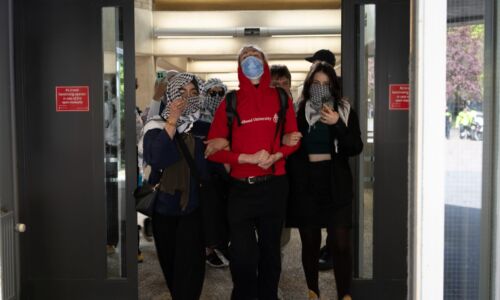Nijmegen microbiologist calls for coordinated scabies approach
-
 Twee schurftmijten onder de microscoop. Foto links: Kalumet (Wikipedia). Rechts: Arthur Goldstein (Wikipedia). Beeldbewerking: Folia
Twee schurftmijten onder de microscoop. Foto links: Kalumet (Wikipedia). Rechts: Arthur Goldstein (Wikipedia). Beeldbewerking: Folia
Scabies appears to be a growing problem among students. Physician and microbiologist at the Radboudumc Matthew McCall believes it is time for a regionally coordinated approach by the GGD (public health service, ed.). 'Through source and contact investigation and extra information, we can identify a mini outbreak and prevent a larger one.'
Since the end of last year, the number of scabies cases known to general practitioners (GPs) has doubled compared to previous years. This is according to a poll by research institute Nivel. Especially young people and students bear the brunt of the mites, which dig small tunnels in the skin. The eggs and faeces they leave there lead to bumps that can itch pretty bad.
According to McCall, there is no immediate reason for panic: ‘There are indeed more reports, but that could also be the result of the increased media attention the topic has received these last years. Because of that, students might be more inclined to visit a GP when they have symptoms such as a rash and itching. This way, more scabies cases are identified.’
Risk groups
According to the National Institute for Public Health and the Environment (RIVM), scabies is more prevalent in cases of reduced personal hygiene, malnutrition, and situations where multiple people live in close proximity to each other. Because of those reasons, scabies is more prevalent among students, but also in healthcare institutions, prisons, and asylum seekers’ centres.
Diagnosis
The microbiologist does argue for a regionally coordinated scabies approach to prevent large outbreaks. According to him, the current approach is not airtight. This is partly because it is not always easy for general practitioners to recognise scabies.
‘If there are multiple cases of a rash and itching in one family, a GP will usually think of scabies.’ For student houses, this is a bit more difficult since roommates do not all have the same GP. Symptoms are often attributed to eczema.
Scabies polyclinic
‘The GGD can prevent this by mapping where cases are located per municipality and thus determining where certain hotspots are’, says McCall. ‘If there is a small outbreak, for example in student communities, the GGD can deploy source and contact investigations and provide extra information.’
The GGD is working on that, says McCall. ‘In Leiden, they’ve set up scabies consultation hours and there is a team of the National Coordination of Infectious Disease Control working on policy, but regional coordination is lacking at the moment.’
GGD policy
‘The scabies approach is already being coordinated regionally at the moment’, says a GGD GHOR (regional emergency medical services organisation, ed.) spokesperson. ‘Every region has its own dynamic. Scabies is mainly prevalent in student cities and less in sparsely populated areas such as the countryside.’ According to the spokesperson, the GGDs have their own local approach that fits the demands and developments of the region. ‘The consultation hours for students in Leiden are an example of that. This target group has lots of questions and during a consultation hour they can have those personally answered.’
In addition, the team of the National Coordination of Infectious Disease Control (LCI) works together with regional GGDs and best practices. ‘An example of an initiative being shared nationwide is an instructional video for the treatment of scabies, on which the GGD Twente and the LCI are working. That video can then be deployed locally.’
Translated by Jan Scholten



